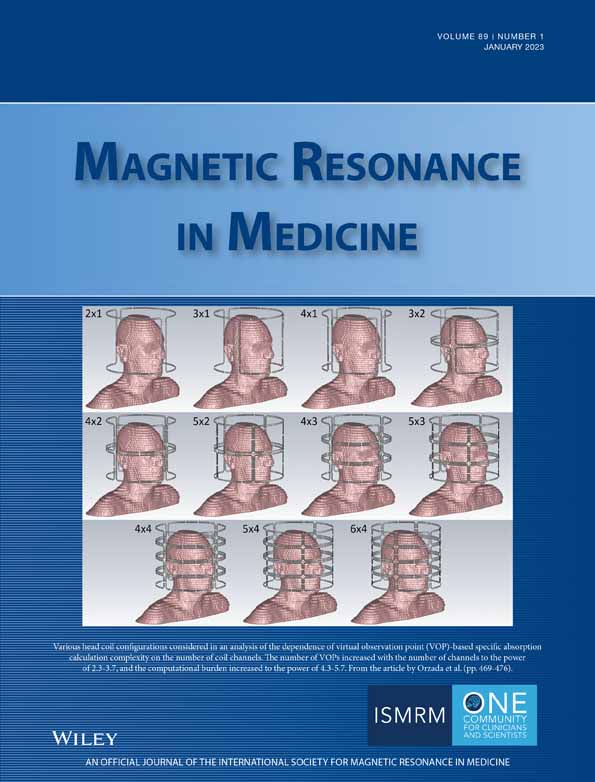Registration and quantification network (RQnet) for IVIM-DKI analysis in MRI
Funding information: Korea Health Industry Development Institute, Grant/Award Number: HI14C1135; the Ministry of Science and ICT, the Ministry of Trade, Industry and Energy, the Ministry of Health & Welfare, the Ministry of Food and Drug Safety, Grant/Award Numbers: 1711138003; KMDF_PR_20200901_0041-2021-02; Ministry of Health and Welfare, Republic of Korea, Grant/Award Number: HI14C1135
Click here for author-reader discussions
Abstract
Purpose
A deep learning method is proposed for aligning diffusion weighted images (DWIs) and estimating intravoxel incoherent motion–diffusion kurtosis imaging parameters simultaneously.
Methods
We propose an unsupervised deep learning method that performs 2 tasks: registration and quantification for intravoxel incoherent motion–diffusion kurtosis imaging analysis. A common registration method in diffusion MRI is based on minimizing dissimilarity between various DWIs, which may result in registration errors due to different contrasts in different DWIs.
We designed a novel unsupervised deep learning method for both accurate registration and quantification of various diffusion parameters. In order to generate motion-simulated training data and test data, 17 volunteers were scanned without moving their heads, and 4 volunteers moved their heads during the scan in a 3 Tesla MRI. In order to investigate the applicability of the proposed method to other organs, kidney images were also obtained. We compared the registration accuracy of the proposed method, statistical parametric mapping, and a deep learning method with a normalized cross-correlation loss. In the quantification part of the proposed method, a deep learning method that considered the diffusion gradient direction was used.
Results
Simulations and experimental results showed that the proposed method accurately performed registration and quantification for intravoxel incoherent motion–diffusion kurtosis imaging analysis. The registration accuracy of the proposed method was high for all b values. Furthermore, quantification performance was analyzed through simulations and in vivo experiments, where the proposed method showed the best performance among the compared methods.
Conclusion
The proposed method aligns the DWIs and accurately quantifies the intravoxel incoherent motion–diffusion kurtosis imaging parameters.
Open Research
DATA AVAILABILITY STATEMENT
The data that support findings of this study are openly available in github at https://github.com/Wonil521/RQnet/, reference number (30).




